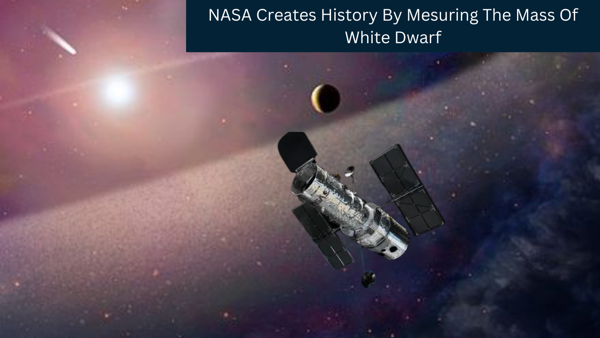
Science & Space
For The First Time In Astronomy's History: NASA's Hubble Measures The Mass Of "Lone White Dwarf"
"Space is an inspirational concept that allows you to dream big," says Peter Diamandis, and this is the best way to begin this article. The universe is vast, and it holds billions of surprises in its basket. One human lifetime will not be enough to explore the vastness, but we must try our hardest to learn everything we can.
The Lone White Dwarf is today's surprise. The scientist uses NASA's Hubble Space Telescope to measure the mass of the isolated White dwarf, LAWD 37, for the first time in the history of astronomy.
Peter Macgill, formerly of Cambridge University and now based at the University of California, Santa Cruz, determined the mass of the dwarf star. After submitting his report to the "Royal Astronomical Society's" monthly notices, the world learned about this miracle.
LAWD 37 is a well-studied white dwarf system by scientists because its distance from Earth is relatively close to that of other binary white dwarf systems. It is located in the Musca constellation, 15 lightyears from Earth.
According to Peter Macgill, the white dwarf's mass is 56% that of the sun. Previously, scientists measured the mass of the white dwarf, but all of those measurements were from binary systems. This is the only lone wolf white dwarf the scientists are measuring the mass.
The procedure of measurement of white dwarf:
Scientists are using simple and straightforward "Newtonian Physics" to calculate the masses of any white dwarf binary system. However, the measurement method is not very accurate and certain; there are many uncertainties regarding the method's validation because some binary star systems have a companion white dwarf star with a long orbital period of hundreds or thousands of years.
In cases like Companion less white dwarf stars, which is in this case, researchers had to employ a natural trick, called "Gravitational Microlensing". A scientific phenomenon first predicted by the great scientist "Albert Einstein" in his theory of general relativity, which involved the bending of light by objects of great mass.
When a smaller object passes in front of a larger object, it causes light to deflect and creates an effect that can amplify the light or even make the background object appear in multiple places at once. However, more often than not, the wrap causes a shift in the apparent position of the object, similar to how we see mirages in the desert.
The mass of the lensing object can be determined by measuring the strong light deflection and thus shift in the position of the measured object caused when the measured object is observed by astronomers. That is true even if the shift is small, as it is in microlensing events like the one involving this white dwarf.
The essence of examining White dwarfs:
According to scientists, our sun is 5 billion years old, which means it has reached its half-life. After 5 billion years, all of the star's fuel resources will be depleted, and the star will remain in the sky as a white cinder.
The same thing is happening to our sun, but not now; it will happen in the future, but scientists are trying to analyze and learn about it now. Because stars are the source of life and white dwarfs gives us clue about the evolution of stars in time. Using spectroscopy, astronomers collect data by dissecting light from white dwarfs. And understanding the white dwarf's life is crucial because it detects the sun's evolution and also provides information about the source of carbon, which is the bloodline of life for everything in the universe.
The ESA's Gaia space observatory was critical in gathering data on the white dwarf. By tracking the movement of stars, the Spacecraft analyzed nearly 2 billion star positions. Astronomers learned the precise timing of the LAWD 37's movement in front of the big star in November 2019 from its data. The only missing link on the LAWD 37 was the mass, which has now been fixed.

0 Comments